Desi Cow Ghee has a very long and rich history. It has been human used in Indian cooking for thousands of years. Traces of Desi Cow Ghee were found in pottery from 6,500 BC and is considered as best for cooking oil.
Desi Cow Ghee is typically prepared by simmering butter, which is churned from cream (traditionally made by churning dahi), skimming any impurities from the surface, then pouring and retaining the clear liquid fat while discarding the solid relics that have settled to the bottom. Spices can be added for flavor. The texture, color, and taste of ghee depend on the quality of the butter, the milk source used in the procedure and the duration of time spent boiling.
Now the question is – Where can I buy pure desi ghee? Buy ghee online at our online store. Visit our website https://sureshdesighee.com/ to know more.
Organic Ghee
Ghee is a class of clarified butter that is originated in ancient India and it is used usually in South Asian cuisines, traditional medicine and religious rituals. One most vital class of ghee is Indian Cow ghee. Lord Krishna was said to be very fond of Indian desi cow ghee as a young child. Desi ghee is made from freshly churned butter after the water and solid from the milk has been removed through heating. You can add spices for the flavor. The texture, color, and the taste perfectly depend on the quality of the Indian cow butter and source of the milk. It depend highly on the duration of the boiling of milk. excess we boil the milk, simmering in a slow flame, better will be the quality.
To make desi ghee obtain raw Indian Cow milk, then boil it, let it cool to about 42-43 degree Celsius and add curd. Let it settle for about 12-14 hours. Curd is then churned using ancient methods to receive clarified butter. Place one or two bars of unsalted clarified butter in a saucepan till the time it boils; then less the heat. When the white foam of milk solids accumulated at the top begins to collapse and thicken, start skimming it off from there. Do not disturb the bottom of the pan. As the butter continues to boil, carefully observe the oily portion until it becomes clear, and watch the sediment on the bottom till it becomes golden brown.
As mentioned in the history column we can see that we are using Indian desi cow ghee since ages. Indian desi cow ghee has one of the highest flash points (485 Degree Fahrenheit) which makes it the best choice for high temperature cooking. It contains Omega 3 and Omega 9 fatty acids along with vitamins A, D, E, and K2. It is one of the higher sources of Conjugated Linoleic Acid, 9 phenolic antioxidants, as well as numerous other minerals. It is a substance that gives longevity and balance to the aging characteristics by enrich the living body. The purity of Klimom Indian desi cow ghee allows it to deep penetrate and nourish the cell as it passes through the lipid membrane of the cells. For this reason, the food cooked in Indian desi cow ghee will be drawn deep into the body where they impart most benefits.
Health benefits of organic ghee.
- Heals and Nourishes Body: It is also known for its healing qualities. Ghee is the best thing to apply on skin burns or sunburns. We have been hearing elders emphasizing to use desi cow ghee for hair as it is it helps to cure dryness and relieves flaky scalps. As the winters arrive, make sure to stock up on your ghee for the skin. It is always recommended because it is considered a great moisturizer that not only heals the skin but also cracked lips and heels.
- Boosts Energy: With about 450 KJ (Kilojoules) of energy per tablespoon, cow ghee nutritional energy content high making it a storehouse of energy. The fatty acids present in ghee can be directly absorbed into the liver and burnt as energy.
- Relieves Constipation: It is observed that most pregnant women face problems with digestion and constipation. Apart from high fiber intake, it is suggested to take a spoon full of desi ghee with warm milk, every night to help digestion and constipation.
- Helps in Digestion: Ghee helps in improving digestion by stimulating the secretion of stomach acid. It is also rich in butyric acid which helps in lowering inflammation and helps in digesting the food.
- Non-Allergic: Ghee does not contain milk solids as it is produced from clarified butter. Ghee is also very low in lactose and casein content, therefore, it is safe to be consumed by those lactose or casein intolerant.

Ghee differs slightly in its production. The process of creating traditional clarified butter is thorough once the water is evaporated and the fat (clarified butter) is separated from the milk solids. However, the production of cow ghee includes simmering the butter, which makes it nutty-tasting and aromatic.
A traditional Ayurvedic recipe for desi ghee is to boil raw milk, let it cool to 110 °F (43 °C). After letting it sit covered at room temperature for around 12 hours, add a bit of curd (yogurt) to it and let it sit overnight. This makes more yogurt. It is churned with water to get the cultured butter, which is used to grow in ghee.

Ayurveda considers pure cow ghee to be sāttvik or sattva-guṇi (in the “mode of goodness”), when used as food. It is the main ingredient in some of the Ayurvedic medicines and is included under (the four main oils: ghṛta, taila, vasā, and majjā) along with sesame oil, muscle fat, and bone marrow. Though eight types of ghee are mention in Ayurvedic classics, ghee made of human breast milk and cow’s ghee is favored. Cow ghee is also used in Ayurvedas for constipation and ulcers.
What is ghee?
Ghee is 100% butterfat, golden, flavorful, nutrient-rich butterfat. Butter contains primarily butterfat, but also milk proteins and water. To create ghee, butter is simmered to separate the oil from the other components, which are strained off.
There are two types of traditional ghee. One, as mentioned above, where yogurt is churned to make butter, and subsequently converted to ghee. The other comes from clotted cream, or malai, skimmed from the top of boiled milk, which is then churned into butter and heated to produce ghee. The latter is a common practice in several Indian households and as I remember, is how my mother and grandmother made ghee.
Both these techniques can be traced back to our pastoral ancestors. They learned that by churning yogurt in a to-and-fro motion for a long enough duration, at the right temperature, they could extract the butter. This trickled down to tropical plains where a hotter climate necessitated the boiling of milk to keep it from spoiling, which eventually led to the daily collection of readily available clotted cream
Nutrition
| Fats & fatty acids | Amounts per 100 g of ghee[13] |
| Total fat | 99.5 g |
| Saturated fat | 61.9 g |
| Monounsaturated fat | 28.7 g |
| Polyunsaturated fat | 3.7 g |
| Trans fats | 4 g |
| Omega-3 fatty acids | 1.447 mg |
| Omega-6 fatty acids | 2.247 mg |
| Omega-9 fatty acids | 25.026 mg |
| Other non-fat nutrients | Amounts per 100 g of ghee |
| Carbohydrates | 0 |
| Minerals | 0 |
| Cholesterol | 256 mg (85%DV) |
| Phytosterols | 0 |
| Vitamin A | 3069 IU (61% DV) |
| Vitamin B, C, D | 0 |
| Vitamin E | 2.8 mg (14% DV) |
| Vitamin K | 8.6 µg (11% DV) |
Like any clarified butter, Desi ghee is composed almost entirely of fat, 62% of which consists of saturated fats. Ghee is also occasionally called desi (country-made) ghee or asli (genuine) ghee to distinguish it from the modern “vegetable ghee”.
Read our Blog : Why the desi cow ghee is costlier than normal ghee?

Buy Pure Desi Cow Ghee Online : Order Now. Free Shipping
Cow Ghee vs Buffalo Ghee
Considered to be extremely nutritious for health, desi ghee is produced from either cow milk or buffalo milk. Being equally popular in Indian homes as both consist of nutrition that is good for our bodies and provide immunity and strength along with solving skin issues and act as a moisturizer.
However, along with the similarities, there are also areas of difference between them such as :
- One of the most visible differences is the colorin the consistency of the ghee. Buffalo ghee tends to be white or off-white whereas cow ghee on the other hand is yellow in shade.
- Since the chemical composition of buffalo and cow are very much similar, still the carotene that converts to Vitamin A is present only in cow ghee. Although the two consist of fatty acids, the quantity composition differs.
- Along with the presence of calcium and vitamins, the consistency of Cow ghee tends to have a more number of nutrients that includes minerals, antioxidants, and proteins and on the other hand Buffalo ghee is a rich source of phosphorus and magnesium as well as a higher percentage of calcium.
- Studies have found that Buffalo ghee has much higher fat content which results in longer shelf life as compared to cow ghee which has a relatively shorter shelf life.
However, in no case either cow ghee or buffalo ghee should be consumed beyond a moderate amount. Both buffalo ghee and cow ghee have their distinctive taste and texture. Hence, it all boils down to the personal preference of the buyer. However, some people prefer to consume both cow ghee and buffalo ghee as per their requirements, while the rest of the audience stick to their preferred ghee.
Packaging
Desi Ghee is generally found to be packaged in airtight glass jars. They should be kept away from direct sunlight as sunlight can cause moisture to making inside the jar. Moisture can cause deterioration to the ghee’s quality as well as reduced its shelf life. To prevent the acceleration of the oxidation process, they should be conserved from anything that causes it, such as UV rays from the sunlight and fluorescent lights. If the jar is unopened, it does not need to be refrigerated as long as the already mentioned conditions are met. Once opened, they can be stored in a kitchen cabinet for up to lifetime. later, it may be left in the refrigerator for up to a year. The refrigerator causes desi ghee to harden but if it is left at room temperature for a while, it will soften up again.
Pure Desi Ghee Price Online: 1 kg Ghee Price is Rs 2400/-
Health Benefits Of Drinking Milk With Ghee At Night
Benefits Of Applying Desi Ghee For Face Overnight
Desi Cow Ghee Benefits
Best Ghee For Babies, Infants Skin And Ghee Massage For Babies
Ghee For Mental Health
Desi Cow Ghee For Hair Growth, Hair Fall Treatment & Regrowth Benefits
Desi Cow Ghee vs Buffalo Ghee vs Jersey Cow Ghee

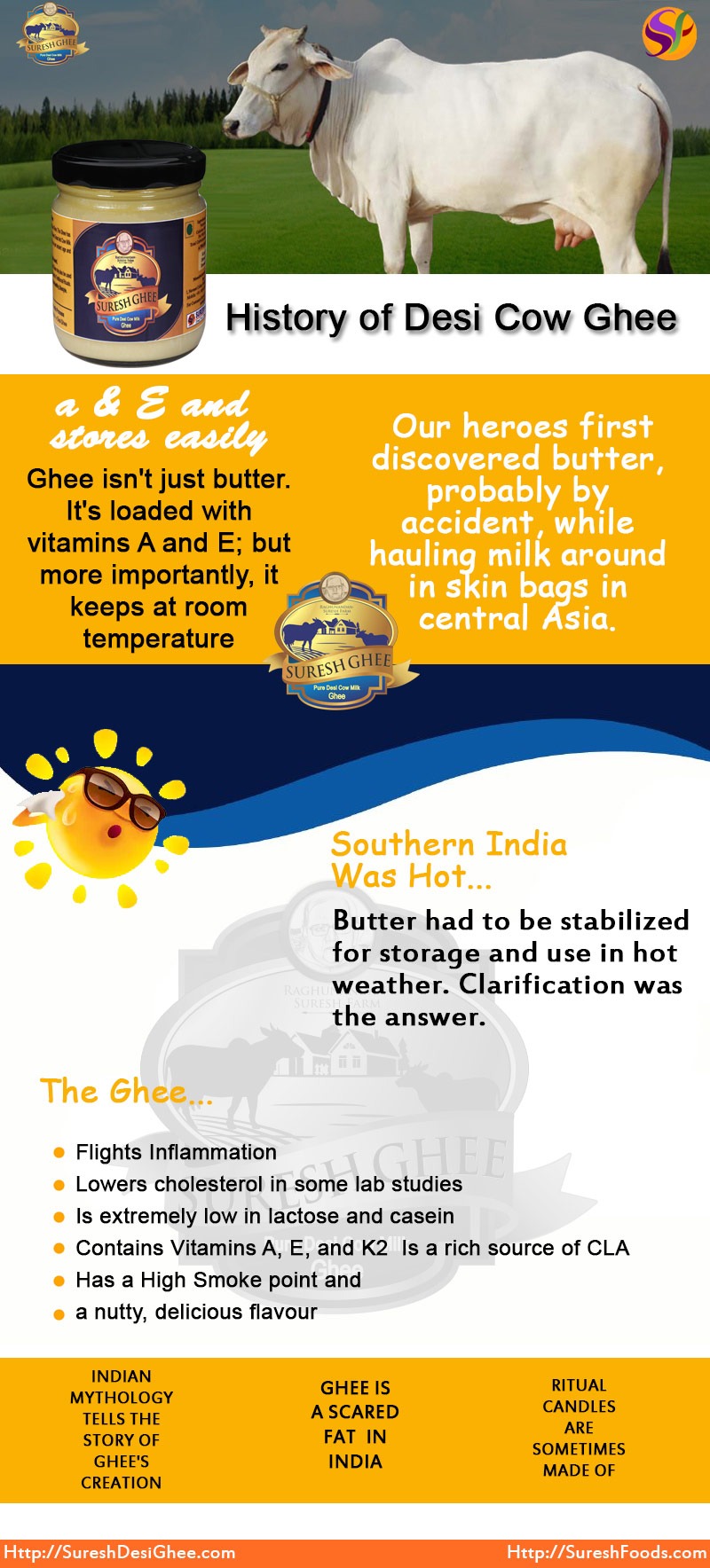
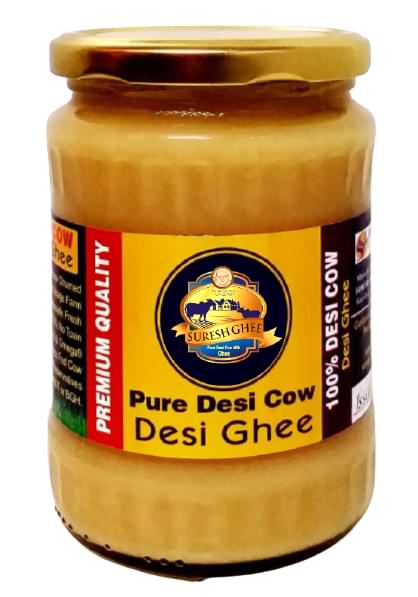
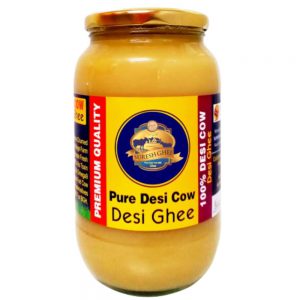
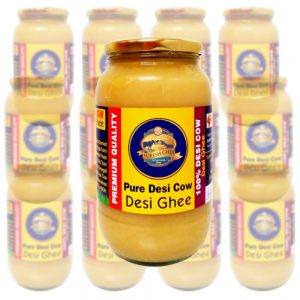
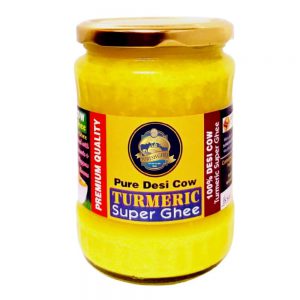
 WhatsApp us
WhatsApp us 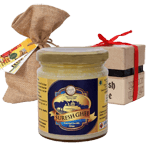
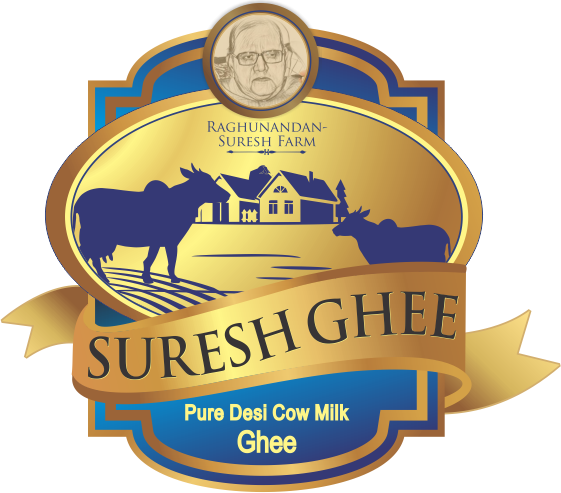
Naveen m...